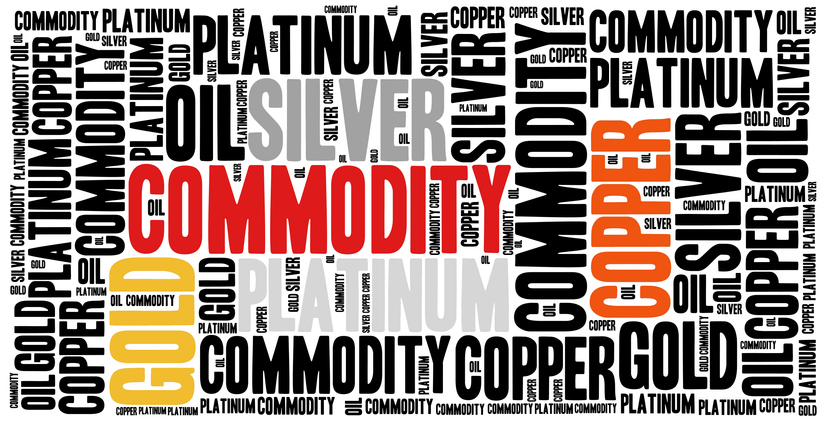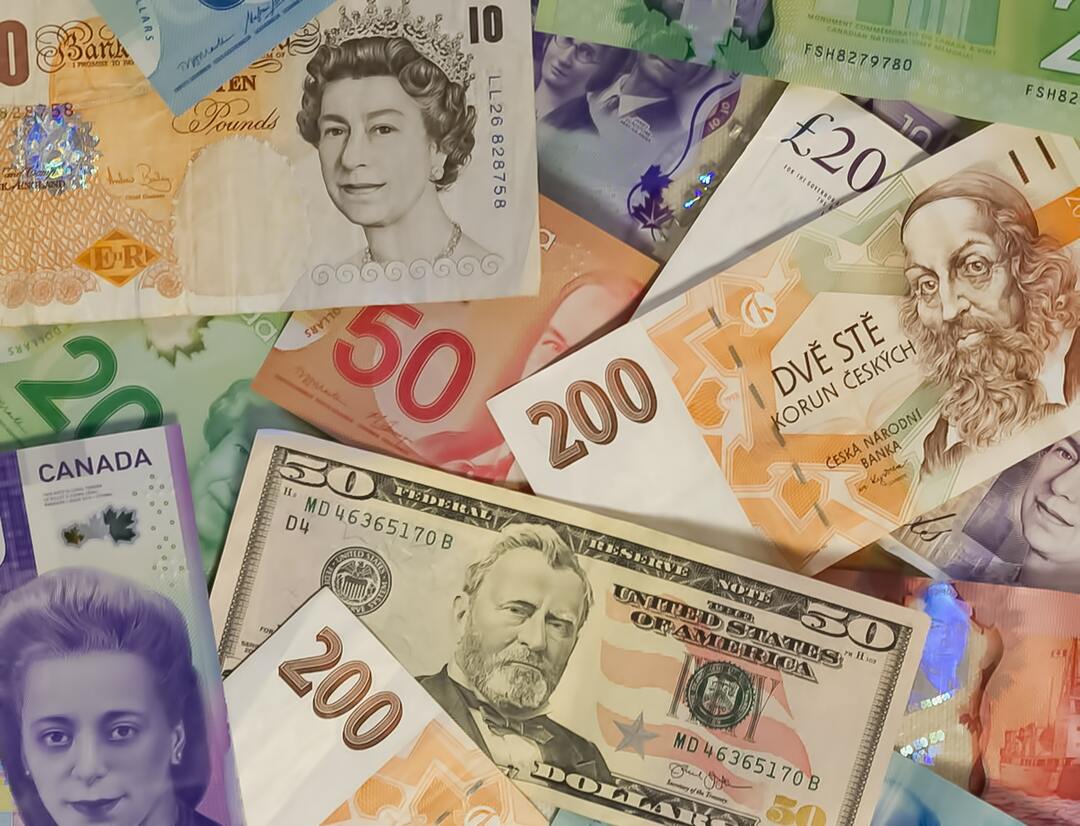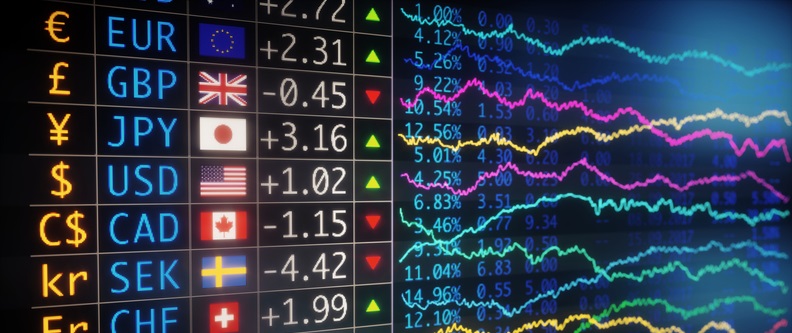Pandemic Update, Risk Off Reaction
Markets have begun the second from final trading week of the year with a distinctly risk off bias amid a significant uptick in near-term Covid-19 concerns, as well as growing no-deal Brexit fears.
In terms of the latest news regarding the pandemic; much of the UK (London and the South East) has been put into a new Tier 4 lockdown (akin to the national lockdowns of H1 and November) amid a spike in Covid-19 cases which is in large part being attributed to the spread of a new, much more transmissible strain of Covid-19 which is feared may raise the UK’s Covid-19 Reproduction rate by at least 0.4. As a result, most EU countries have now implemented travel bans on incoming passengers from the UK, though the new strain of the virus has already been detected in Italy. France has also imposed a ban on incoming freight, which is causing disruption in key UK-France and triggering fears of near-term food shortages in the UK; an EU meeting being held this morning will co-ordinate the bloc’s response and attempt to reopen the trade of essential goods. Elsewhere, a more “severe” strain of Covid-19 that is not linked to the UK strain has been detected in South Africa, which is also said to be more virulent.
On the Brexit front, another weekend has passed without significant progress having been made towards a deal; talks remain blocked over the issue of fisheries and pessimism that a deal can be reached continues to rise on both sides of the negotiation. Moreover, the European Parliament’s deadline for a deal to be presented to them by Sunday in order for it to be ratified in time for the end of the year has been missed. EU and UK sources have also pushed back against calls from a number of UK MPs to extend the transition period, with “a few extra days” not being seen as giving enough time to conclude negotiations. UK Cabinet Minister Gove did however suggest that the EU and UK might be able to agree on a series of “mini-deals” to ease any chaos triggered by no-deal, though the EU has in the past pushed back against this idea as it would weaken their negotiating stance.
European equity markets are bearing the brunt of the bad news, with the Stoxx 600 currently trading lower by more than 2.5%, with particular weakness being seen across the travel and leisure sectors. Losses in US equity index futures are also being seen across US equity index futures (S&P 500 futures down 1.7%) but are less severe that in Europe given that Congressional leaders managed to agree on a $900B Covid-19 aid package over the weekend with voting on the bill to start as early as today. The bill includes $600 in direct stimulus payments to each American, as well as an extension of the Federal unemployment insurance scheme that will give Americans $300 per week and aid for Airlines.


In terms of commodities, steep losses are being seen in crude oil markets as a result of the above noted negative Covid-19 news, with fuel demand set to take a significant near-term hit in Europe as a result of lockdowns and flight restrictions. Having nearly hit $50 at the end of last week, front-month WTI futures are trading back in the $47.00s (down over 3%), albeit off lows in the $46.00s. Industrial metal prices are also mostly lower (Copper -1.4%, Lead -3.3%, Aluminium -1.9%), although Dalian Iron Ore prices have managed to buck the risk off trend amid 1) supply concerns amid a landslide at one of Vale’s mines and 2) news that China (the world’s biggest Iron Ore consumer) is to target 8% real GDP growth in 2021 and 3) upbeat forecasts from a Chinese government research body that predicted Iron Ore demand would be up 9.2% in 2020.
Precious metals have been choppy, with spot gold (XAUUSD) swinging briefly above the $1900 level during Asia Pacific hours to lows around $1860 and then back to current levels in the $1880s, where it is marginally lower on the day. Meanwhile, spot silver (XAGUSD) swung between highs just under the $27.50 mark and lows under $25.00, before tracing back to the low $26.00s, where it currently trades higher by just under 2%, all in a matter of hours. USD strength complicating the precious metals otherwise safe-haven allure is seemingly the cause of this morning’s choppiness. However, with US real interest rates making fresh lows since the start of September (the US 10-year TIPS yield hit lows under -1.08% for the first time since the 3rd of September), precious metals markets ought to remain well supported.
FX Markets


FX markets are reflective of the classic Covid-19 risk off driven moves we have seen time and time again in 2020. USD is the G10 outperformer on safe haven demand, with the Dollar Index (DXY) at one-point rallying back above the 91.00 level, before retracing back to the 90.60s, still up by around 50 points or just under 0.6% on the day. The next three best performers vs USD are safe-haven JPY (down about 0.4% with USDJPY back above 103.50), safe-haven CHF (down about 0.6% vs USD with USDCHF testing 0.8900 to the upside) and funding currency EUR (down about 0.7% vs USD with EURUSD back below 1.2200). JPY has seemingly for now shrugged off reports that the Japanese PM is keen to prevent USDJPY from sliding below 100.
Photo by John McArthur.
Unsurprisingly, the more risk sensitive G10 currencies are performing the worst, with USDCAD higher by about 0.9% to trade just below 1.2900 and AUDUSD and NZDUSD both lower by around 1.4% to trade in close to 0.7500 and just above 0.7000, respectively. AUD has thus far been unable to garner much support from higher Iron Ore prices, perhaps given growing concerns about the Sydney Covid-19 outbreak that mas prompted lockdowns in the region as well as inter-state travel restriction in the country.
GBP is the worst G10 performer, down more than 2% vs the buck at worst levels with GBPUSD falling as low as 1.3187 before recovering to present levels just under 1.3300 in more recent trade. As noted above, the UK is the epic-centre of the outbreak of the new, more virulent Covid-19 strain and appears to be on a crash course towards a no deal end to the transition period. Much stronger than expected CBI Distributive Trades Survey data for December, which saw the index surprise expectations by rising to -3 from -25 in November (exp. -35), has done little to improve sentiment. Indeed, the survey would have been conducted before the imposition of the latest Covid-19 restrictions in the UK and thus is already being seen as out of date.
Coming Up
Very little data of note on today’s economic calendar, aside from Canadian New House Price Index numbers for November at 1330GMT/0830EDT and EU Preliminary December Consumer Confidence numbers at 1500GMT/1000EDT. The market’s main focus will thus remain on the latest updates regarding the spread of and reaction to the new strain of Covid-19 being reported in the UK (and South Africa), Brexit negotiations and whether Congress can vote on and pass further stimulus today or in the coming days.




